I have a flock of bantams of assorted breeds. I will give some information of each breed in the order that I got them.
Bantam vorwerks
I got my two bantam vorweks, Amber and Honey, in April 2013.
The vorwerks are a breed of chicken originating in Germany. A rare fowl, it has distinctive black and gold plumage with black head and tail and gold body.
In 1900 a poultry breeder called Oskar Vorwek began to create a medium sized fowl. It is said that he liked this plumage as it didn’t show the dirt. The chicks start off with the plumage colours in reverse.
In 1966 an American man called Wilmer Vorwerk developed an interest in the breed and he created the bantam version. This version is now the recognised version in America.
They are good layers of cream coloured eggs. They are hardy, adaptable, alert and active. They have a single comb and white earlobes.
This is Honey on the left and Amber on the right. I have chosen descriptive names for all my girls and these two were named for their gold colour.
They are friendly and inquisitive characters. If I crouched down they came running to me. If I was cleaning the coop they were there inside the coop watching my every move and chatting away to me.
They did have little spats with each other every now and again despite being inseparable most of the time.
As for the good egg laying, well Honey was a reasonably good egg layer, laying four or five eggs a week but Amber had never been good at laying eggs. She had a real problem with egg laying right from the start and only ever laid two or three eggs a week at most and often soft shelled despite giving her limestone flour, crushed egg shells and cod liver oil. I always felt that there was something wrong with her egg making machinery.
I am sure this isn’t typical of the breed though as I always felt that Amber was sort of like the runt of the litter. She was noticeably smaller than Honey.
Amber was a feisty girl though and above Honey in the pecking order. She was full of chat and character.
Bantam silver and gold laced wyndottes
The wyndotte is named from a native tribe in New York State. It is one of the original American breeds developed in the 1800’s along with domeniques, plymouth rocks and rhode island reds.
The original wyndotte was the silver laced variety developed in New York in 1865. There are numerous different colours now.
Bantam wyndottes are docile, hardy and good egg layers. They have a flat rose comb and sturdy legs.
Topaz and Sparkle are also named for their looks and were top girl and second girl in the pecking order.
We got them at the beginning of April 2014 and they very quickly settled in and established their top status.
Topaz was a good top hen because she doesn’t stand any nonsense and none of the girls ever contest her but at the same time she never bullies.
Sparkle laid from her very first day with us and remained our best layer. She laid an average of five eggs a week.
Topaz on the other hand didn’t lay until three months later and after laying three eggs over a two week period stopped altogether. I had no idea why she wasn’t laying. She was happy and healthy with a red comb and not moulting so it was a bit of a mystery.
Topaz was at our loudest girl. She would shout every time any of the girls went into the nest box as well shouting on occasions when she herself had been in the nest box but not laid an egg.
Sparkle preened all the time. I know they all preen a lot but Sparkle preened much more than the others.
They didn’t run to me when I would stoop down like Amber and Honey but they were completely confident with me and would allow to me to touch them or get right up close to them. They took no notice of me moving around them and if they were in my way and I went to gently move them aside they would lean into me.
Bantam game
There are many varieties of bantam game birds and they come in many colours.
They are curious birds and can be tamed. They are not good layers and can tend to be broody. They make good mothers. Luckily these two have never gone broody.
I got these girls at the beginning of June 2014 and they settled into the flock within a few days which was my quickest integration yet.
They went in at the bottom of the pecking order with Emerald at the bottom.
Toffee has partridge markings while Emerald has a glossy green and purple sheen to her feathers which is why I called her Emerald. She has some silky mixed in her background which gives her the feathers on her legs. Emerald has the tiniest comb I have ever seen and no lobes, this apparently is typical of her breed.
These breeds have long necks and are almost bottle shaped with their round shoulders. They have very prominent crops too. They seem able to bring their neck in and then when they want to they stretch it out.
Toffee is the most shy of my girls and doesn’t like us to get too close to her. Emerald on the other hand is like Amber and Honey and will run to us if we stoop down. She is the easiest girl to pick up.
Emerald is also very inquisitive and always wants to see what I am doing. When I open the store cabinet she will jump from the coop roof to the top of the store cabinet then put her head in looking at the sunflower seed box. She is an entertaining girl.
Both these girls had been used as broodies for the farmer and Emerald laid one egg on her second day with us and then started to moult. Toffee started laying three weeks later (which is the usual time span after being broody) and laid five eggs in ten days then started moulting.
It is also usual for them to go into the moult after being broody. There have been masses of feathers from both these girls and yet they still look good. I think the new feathers must already be through by the time the old ones fall out.
I am hopeful that if these girls moult at different times I may then still get some eggs when the other girls are moulting.
Bantam brown leghorns
They originated in Italy and the white variety first reached Britain from America around 1870 and the brown followed a couple of years later.
They are a very sprightly and alert breed. They have a single floppy comb and long, feather free legs.
They are prolific egg layers and rarely go broody. The eggs are white and laid throughout the year.
They can be rather noisy and like to roost high. They will roost in the top of trees given the chance.
I got Peaches and Barley in June 2014 at six weeks old. I named them for their peach coloured breasts.
I was going to integrate them slowly because of their young age but by the third week they kept digging under their gate to join the main flock. I decided that as they were desperate to join the flock that I would let them and to my surprise there was no trouble at all.
They are very speedy and if the girls ran at them they would soon get out of the way and never actually got pecked at all.
They do like to perch up high and from their first night they would find the highest spot to roost.
At ten months old they still have their baby cheeping sound and they are cheeping all the time. I am not sure if this is just because they are chicks or if they will turn out to be noisy. We will have to wait and see.
They were very skittish at first but are now getting braver around me and braver around the rest of the flock. They are growing fast and have long legs and big feet for their size. Their comb is also growing quickly.
They should start laying around November to December. It will be good to have two good egg layers as the rest of the flock aren’t very good egg layers apart from Sparkle and her eggs are very small.
Barley is on the left and her comb flops to the right, Peaches is on the right and her comb flops to the left. This makes it really easy to tell them apart.
They both started laying in November at six months old and Barley started three weeks earlier than Peaches but Peaches soon caught up by laying her eggs in quick succession. Barley laid her first five eggs in three weeks while Peaches laid her first five eggs in one week so it looks like she will be a good egg layer.
They chatter all the time but it is still squeaky compared to the other girls. They also both like to jump on my back which is something none of the other girls do. They like to jump on my back when I am poop picking and stay there while I move around the run until I am next to a perch when they will just step from me to the perch. I have no idea why they do this but I love this bit of interaction with me.
They are also inseparable, wherever one is the other is close by, whatever one is doing the other will join in.
I love my diverse little flock and they all get on happily together which is lovely to see.
Sadly Amber died on 25th April 2015.
Sadly Sparkle had to be put to sleep on 26th June 2015
Having lost two girls I felt it was time to add two more girls to the flock. On 28th July 2015 I added a goldtop and an ancona. I stuck with my theme of descriptive names and called them Butterscotch and Speckles.
Bantam goldtop
Goldtops are a sex linked cross breed. The father is a gold silkie and the mother is a white sussex. The cross results in the hens inheriting the gold from their father and the cockerels inheriting the white from their mother.
Goldtops have a bouffant crest and grey feathered legs and feet. They have a black face, black comb and black beak and they have turquoise lobes.
They lay a cream coloured, slightly satin shelled egg. They make good broodies and are prone to going broody but lay well in between bouts of broodiness.
Butterscotch proved this to be true by laying twenty eggs in twenty three days then going broody for two weeks. Two weeks later she started to moult but to my surprise also started laying again five days out of seven.
She was full of character and went into the flock at the middle of the pecking order. She soon became used to us and was the first to race over to eat greens from our hands.
Bantam ancona
The ancona originates from the Italian province of Ancona and was bred from a mixture of breeds including the leghorn.
They are tough, hardy birds and prolific layers (up to 220 per year) of white eggs. They are not prone to going broody.
They have white lobes. They can have single combs or less commonly rose combs. Speckles has a single comb.
Their feathers are beetle green-black and tipped with white giving them a speckled appearance. With each moult the white spots get bigger. They have yellow, featherless legs.
They are alert and busy birds and speedy too. They can also fly well.
Speckles went in at the bottom of the pecking order and was very nervous of the girls and of me. She won’t take greens from my hand yet but I hope that in time she will get used to me. Toffee was the same when we first had her and it took quite a long time to win her confidence.
I won’t know if she lives up to her expectations of being a prolific layer until spring as she started moulting within days of her arrival. I had delayed updating this page because she lost her tail within the first few days of being with us and I had been waiting for it to grow back so that I could get a good photo of her.
She did have bigger white spots after her moult.
The latest two girls settled quickly and easily into the flock and I am loving all the different colours, shapes and characters of my flock.
2019 – An update on Speckles
Speckles didn’t turn out to be a good layer after all. In fact Speckles is a very poor layer. She does lay enormous white eggs which are similar in size to a standard girl’s eggs. In 2015 when we got her she was already moulting so didn’t lay until the following spring. This means she could have been two or more years of age at the time that we got her.
In 2016 Speckles laid 50 eggs in 6 months giving her an average of 8 per month.
In 2017 Speckles laid 27 eggs in 5 months giving her an average of 5 per month.
In 2018 Speckles laid 12 eggs in 4 months giving her an average of 3 per month.
In 2019 Speckles laid 6 eggs, 1 in march and 5 in June.
In 2020 Speckles didn’t lay any eggs. She had become our retired lady.
Speckles became very friendly and rose up to top girl position as she became the longest standing girl in the flock. She has always liked to jump on my back.
Seramas
In the summer of 2016 we re-homed Honey, Topaz and Butterscotch with Moira at Whitehouse Farm because of plucking issues. Later in the year it seemed the right time to add some new girls.
On August 31st 2016 we bought home two little seramas. I named the buff one Caramel and the grey one Pebbles. They were one year old when they came to us. They are both silky feathered.
Seramas are not only the smallest bantam breed but they are the smallest chickens in the world.
They are a true bantam as there is no larger size. They are native to Malaysia and only arrived in the U.K. in 2004.
They come in three feather types, straight, silkied or frizzled. Our little girls have silkie feathers and feel soft like down or chick feathers.
They are upright birds with small neat combs and legs free from feathers.
They come in lots of colours and don’t breed true to colour or even to size. Caramel is smaller than Pebbles.
They are unusual in that they moult continously all year round and lose a few feathers each day. They are all year round egg layers of tiny eggs. Their eggs range in colour from pure white to dark brown.
They are very quiet and only make an occasional cheeping sound.
They are easy to tame and full of character. Our two little girls are adorable and have fitted into our flock really well.
Sadly Caramel died on 25th September 2016.
We had only had her for three weeks. I didn’t want Pebbles to be left as the only tiny girl in the flock so I set about searching for another breeder of seramas.
On 25th September 2016 we added two girls who were four months old. I named them Rusty and Freckles.
They very quickly settled into the flock. Rusty is silky feathered and Freckles is straight feathered. They are very friendly and just adorable.
Sadly we lost Toffee on November 30th 2016 from old age and Pebbles on December 7th 2016 from mycoplasma. In hindsight we realised that this was what Caramel had too. We were now down to six and decided to wait until spring before adding more girls.
We waited until the frosts had passed and the temperature was warmer then we added three more seramas on 25th February 2017.
We have Dandelion with frizzle feathers, Apricot with silkie feathers and Cinnamon with straight feathers.
When we could no longer call them new girls we called them the three amigos as they are always together. Dandelion and Cinnamon are especially inseparable.
Apricot was really friendly from the start with Dandelion and Cinnamon being more shy. Cinnamon is tiny compared to Freckles our other straight feathered serama.
It took six weeks to get them integrated because Rusty and Freckles were aggressive until the pecking order was settled with Rusty as top serama followed by Freckles.
We now had a flock of nine for the first time and hoped it would remain stable and settled for some time.
We re homed Peaches and Barley on May 19th 2017 with our friend Moira on her free range farm due to them feather pecking and bullying. The flock became much more peaceful once they had left and they settled in at the farm really well.
Sadly Rusty died on 30th September 2017 after having a second prolapse. We were back to a flock of six and Rusty was very much missed.
Sadly we lost Apricot overnight on 9th April 2018. She had been fine the day before and we had no idea why she died. She was such a friendly girl was very much missed.
On 20th May 2018 we collected three serama chicks at about a month old, two silky feathered and one frizzle. Sienna, Jasmine and Blue. Sadly Blue (frizzle feathered) turned out to be a cockerel and we couldn’t keep him.
On 30th June 2018 we lost Freckles. Freckles also had a prolapse then laid a soft shelled egg which got partly stuck inside her. We had to take her to the vets to be put to sleep.
On 9th July 2018 we lost our lovely Emerald to old age. She was our longest standing girl and the only girl we felt we got to old age. The vet said it felt like she had a large tumour in her abdomen which is something that happens in old hens. She had to be put to sleep and I was heart broken to lose such a long standing favourite girl.
The flock seemed so small that we decided to get another black game girl to be company for Speckles who was our only remaining bigger girl. We called her Ebony.
We put Ebony straight in without separating her from the flock and integration was so easy that we decided to add another game girl. On 15th July 2018 we added Flame also without separation and this integration was also easy.
On 22nd August 2018 we added five more straight feathered seramas, they were about two to three months old. We collectively call them the amigos but named them, Smoke, Spangle, Vanilla, Salmon and Marmite. As always we have stuck with descriptive names.
From left to right we have Marmite, Spangle, Smoke, Vanilla and Salmon.
We were now up to twelve girls which was the biggest number so far, all lovely colours and with all the girls getting on well together.
Our flock became seven
Sadly we had five losses in 2019. It was a very sad year.
We lost Dandelion 13/4/19
We lost Sienna 25/4/19
We lost Vanilla 4/9/19
We lost Cinnamon 3/10/19
We lost Jasmine 28/10/19
We lost Dandelion and Cinnamon from the myco. We lost Sienna, Vanilla and Jasmine from heart defects.
The winter of 2019 was our first winter free of myco. We believe that Dandelion was the carrier and with her gone we were at last free of this terrible problem in our flock.
We were left with a flock of seven girls who seemed to be robust and getting along very happily together.
Two new girls
On 8/9/20 we got two more seramas at three months old. I named them Shadow and Sugar.
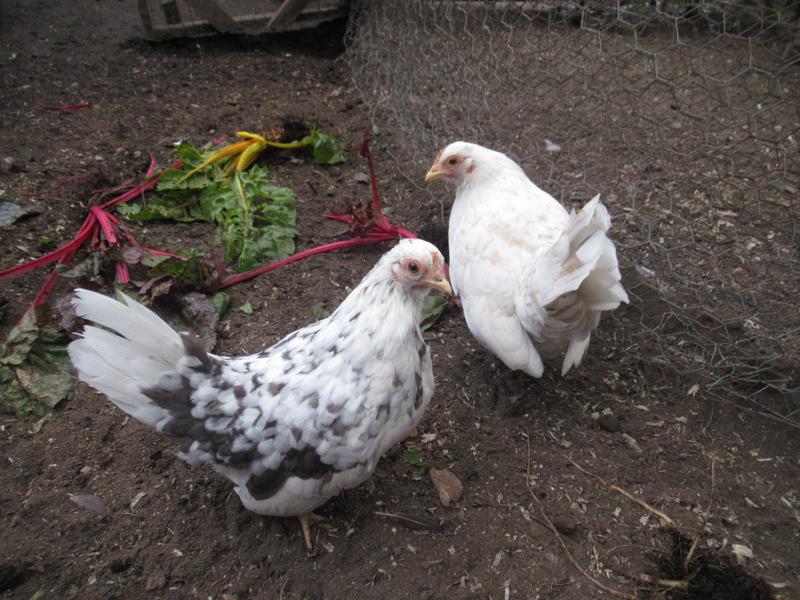
They settled into the flock beautifully and started laying eggs in February 2021.
On 17/3/21 we sadly had to have Marmite put to sleep as after numerous egg laying problems the year before she was unable to lay her first egg of the year.
On 26/3/21 we lost Speckles to age at eight years old. We found her just outside the pop hole at bedtime.
On 5/10/21 we re-homed Ebony to a friend who had just lost one of her girls leaving her with only two. Ebony had been aggressive to all the girls but had been mounting the little girls. She would pin them down and wiggle her bottom. She settled into her new home with two girls of a similar size to her and there was no longer any aggression.
New girl
On 16/10/22 we got a five month old silver spangled hamburg and I named her Spot.
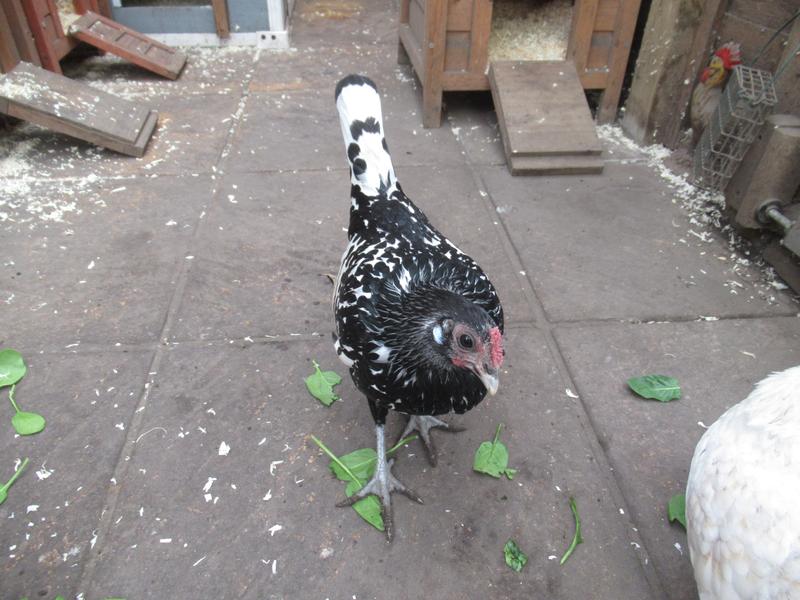
Hamburgs carry a German name but are generally considered to have originated in Holland. They are active flighty birds. They are good egg producers of small white eggs. They rarely go broody. They are very cold hardy. They have a rose comb and unfeathered slate blue legs and feet.
I was heartbroken to have to have Shadow put to sleep on 10/2/22 as she had a large egg stuck.
Sadly Smoke had to be put to sleep on 21/2/22 as she had egg peritonitis.
This led me to the decision that I would no longer get more seramas in the future. They are so delicate and seem to be prone to egg laying problems and it is too heartbreaking to lose them while they are young. I will be getting slightly bigger and more robust bantam breeds in the future.
Three new girls
On 25/2/22 we got three new girls using a courier service so that we could get some different breeds from further away. We got a chabo, birchen modern game and ardennaise and they were three and a half months old. I went with my tradition of usingb descriptive names.
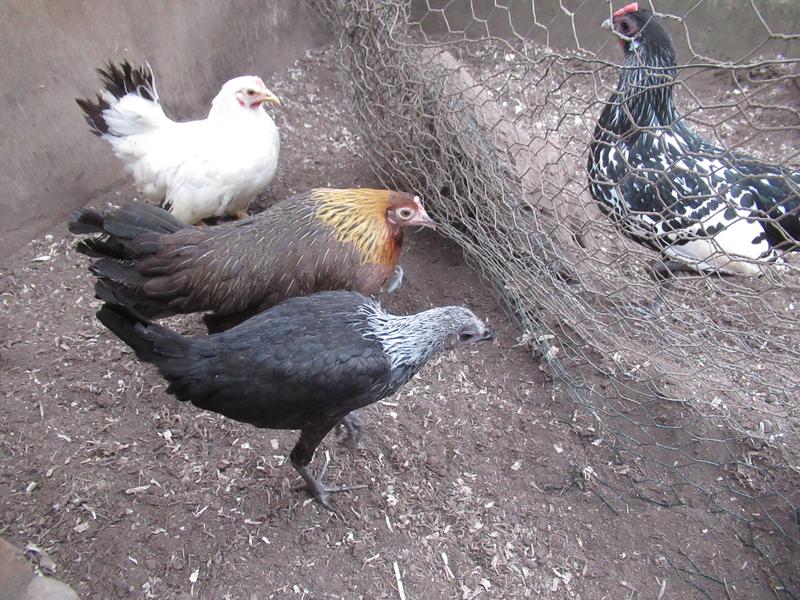
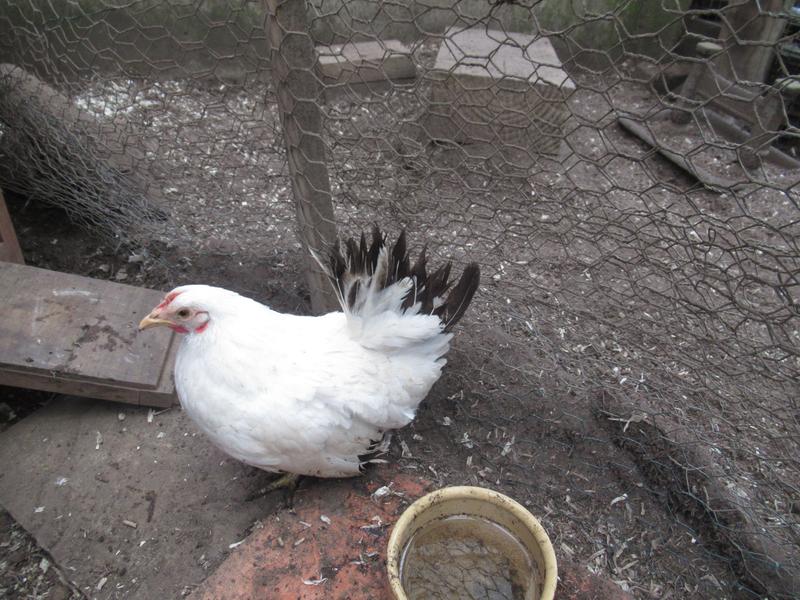
The bantam chabo is a Japanese breed. It’s a true bantam meaning that there are no large fowl counterparts. It is characterised by very short legs and a large upright tail that reaches higher than the head of the bird. It has a single comb. It’s eggs are cream tinted.
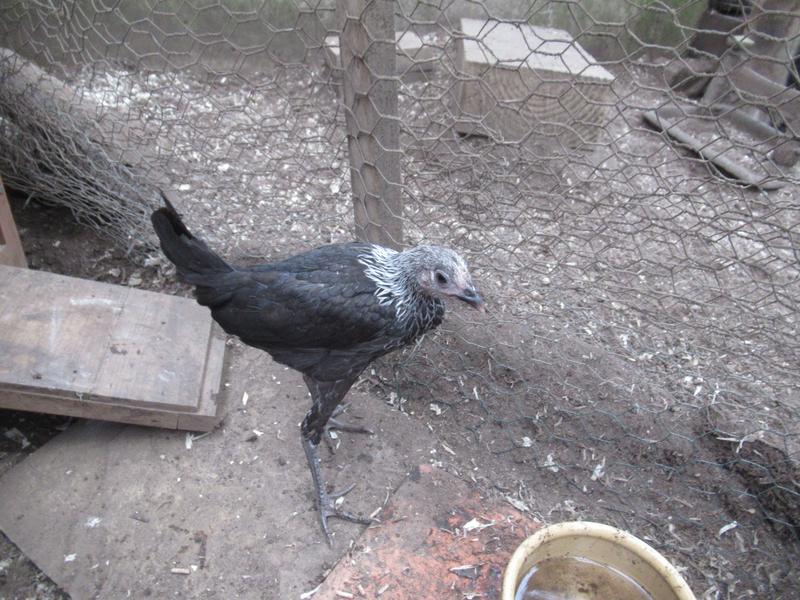
The modern game is a breed of ornamental chicken which originated in England between 1850 and 1900. It’s a tall bird with long legs and a long neck. It has a very small comb and wattles. The breed is a poor layer of small light coloured eggs.
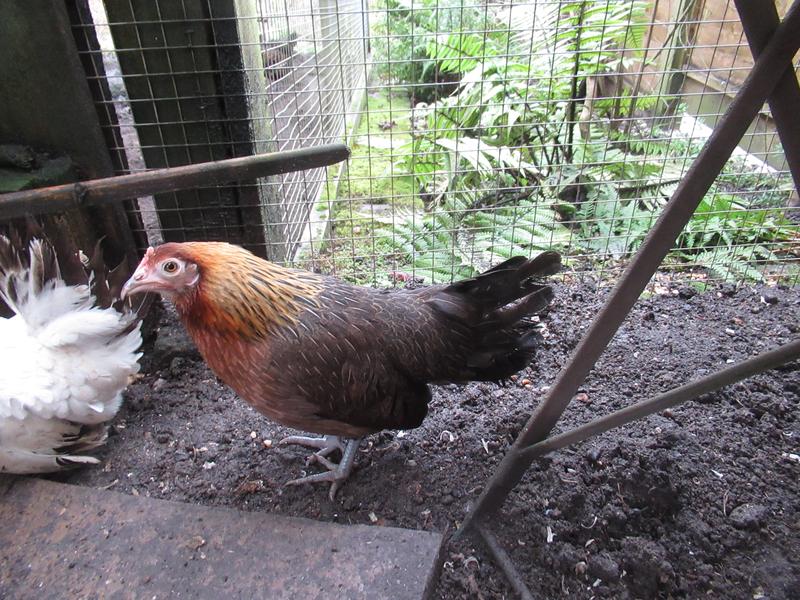
Ardennaise are a breed of domestic chicken from the Ardennes Plateau in Belgium and Eastern France. It has a single comb. Their tail is held very erect. They are good layers of white eggs.
They soon settled into their part of the run where they would need to be kept separate while on growers pellets. They are beautiful girls and a lovely addition to the flock.
I was heartbroken to lose Spot on 11/5/22 at one year and one month old. Spot had never laid an egg which had worried me that there was something adrift despite her looking great. I think she had a heart defect which caused her not to lay as I think she died of heart failure. One minute she looked great and a little later I found her face down in the run. It was very fast.
I rang the breeder I got Spot from and told her what had happened. I asked if she could spare me another silver spangled hamburg as I really missed having one in the flock. She said she could spare me one.
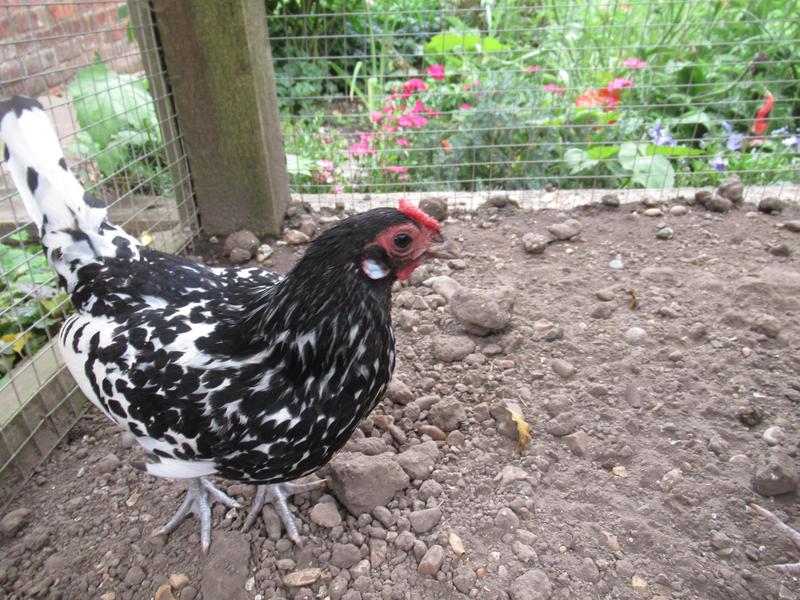
Dot was the same age as Spot as she was from the previous year’s girls. Dot settled into the flock really easily. Dot put herself to bed with the flock from the very first night and was soon dust bathing with the flock. Dot was smaller in size than Spot but not at all nervous and was happy to be around us straight away. Dot laid an egg on the first full day with us much to our relief. We were very happy to have Dot in the flock.
Two new girls
On 18/8/22 we added two new girls. A seven month old bantam light sussex who I named Diamond and a five month old bantam buff plymouth rock who I named Saffron.
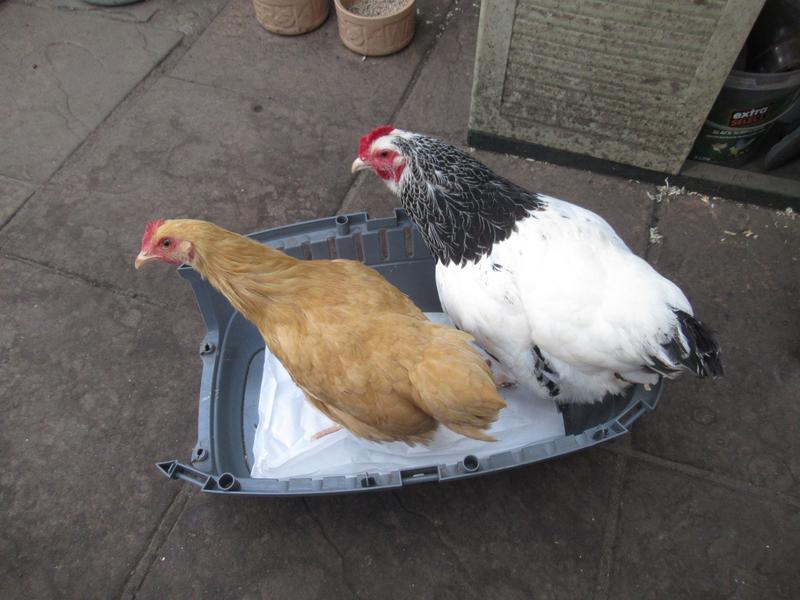

The light sussex originated in Britain around 1920. They have a medium sized single comb. They have a placid nature and are good at coping with bad weather. They are excellent layers and often continue to lay throughout winter. Their eggs are cream to light brown colour. They are heavy bodied and not flighty.

The plymouth rock is an early laying breed which can produce a large number of eggs per year without suffering broodiness. The eggs are light cream and they are an excellent layer for a pure breed. They have a red single comb. They are not a flighty bird and are easily tamed.
Sadly I had to have Flame put to sleep on 8/9/22. She was nearly seven and suffering from her age, spending time with her eyes closed or her head under her wing. The afternoon before I took her to the vet she perched in the chicken shed and stayed there and I knew her time had come.
Flame went gently in my arms with tears streaming down my face. She was such a lovely girl and will be very much missed.
On 24/1/22 we lost Saffron overnight at only eight months old. She had laid seventeen eggs. There didn’t appear to be anything wrong with her apart from a slightly muddy coloured comb. We hoped that after a bad year for loses the remaining eight girls would stay happy and healthy.
On 28/4/23 we lost Diamond. She had come into the flock with gape worm. After eight months treating her with double doses of flubenvet she lost her battle with it. She was a year and three months old and had never laid an egg. This was a terrible experience.
New girls
On 13/6/23 I got two different colour of game girls. A gold/salmon modern game I called Mango and a silver/salmon modern game I called Cloud.
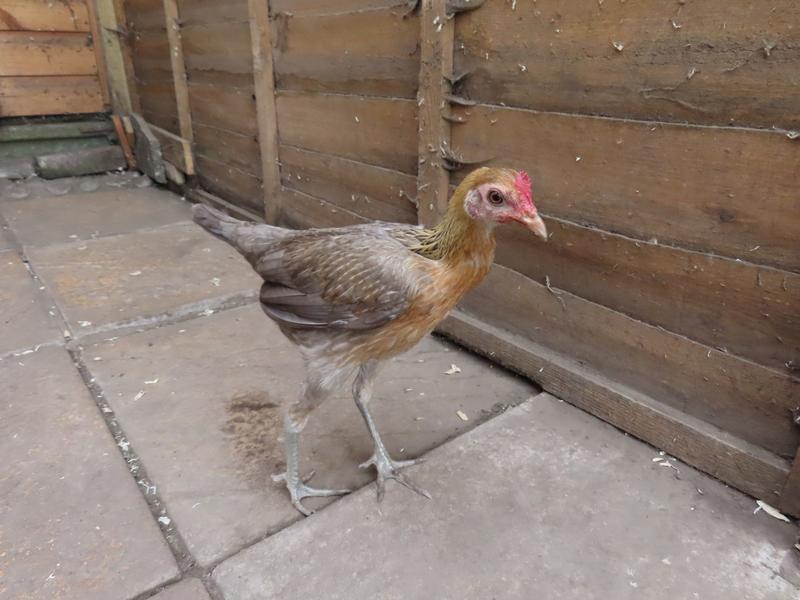
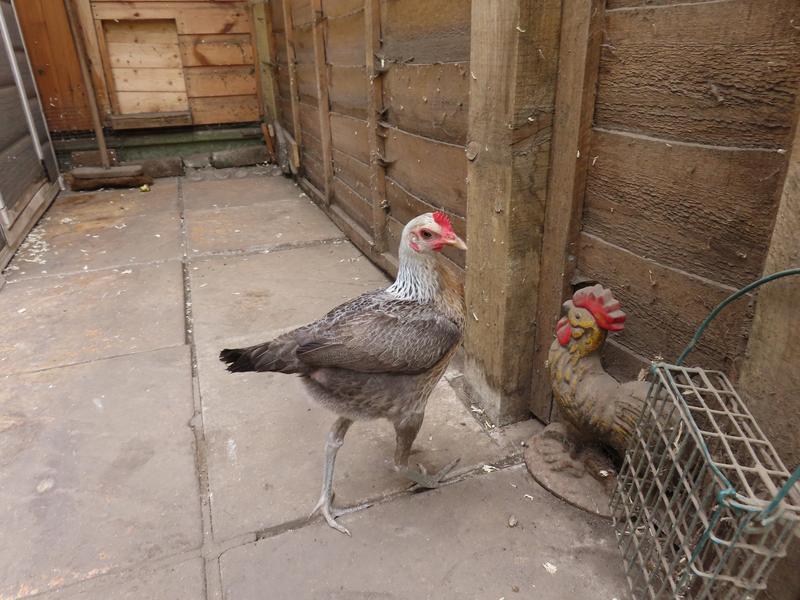
On 22/6/23 I got a gold partridge wyandotte I called Autumn.
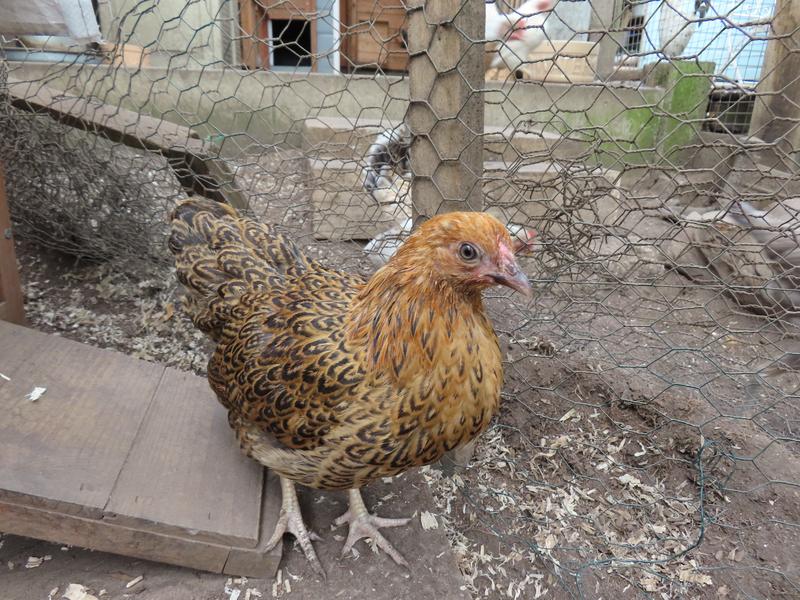
We were now back to my favourite flock number of eight girls.
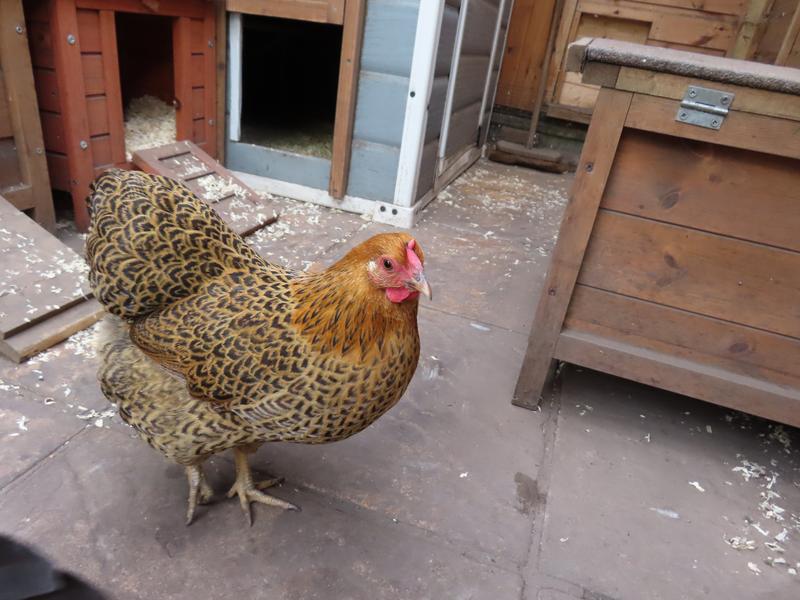
On 3/10/23 Autumn laid her first egg at six and a half months old. Autumn is a beautiful girl and has a quirky comb. She has a lovely nature and follows me around the run chatting to me.
Sadly on 22/2/24 we lost Salmon to egg peritonitis. At five years old she was our eldest serama.
New girls
On 10/5/24 we got two new girls. A bantam buff laced wyndotte who was 14 months old and chabo/Dutch bantam who was 18 months old. We named the wyndotte Red and the chabo Snow.
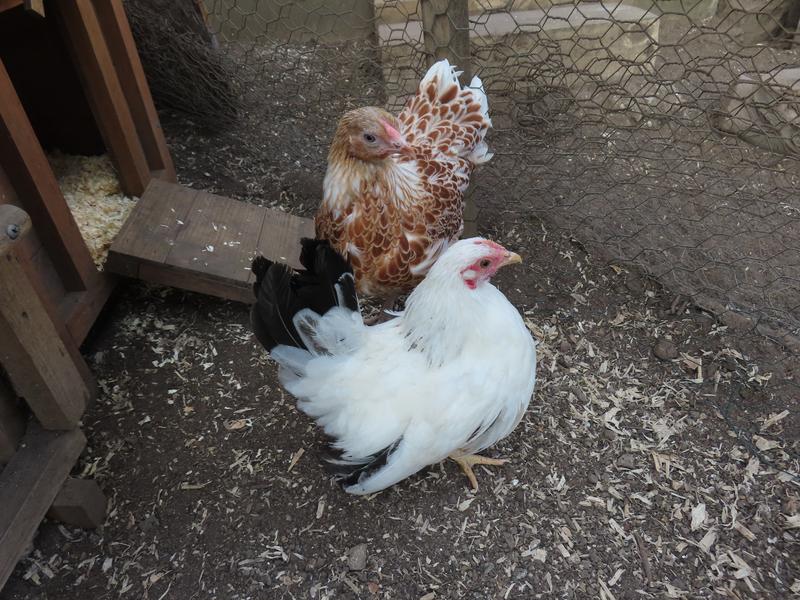
Two beautiful girls who soon settled in.
Sadly we lost Dot on 17th July. She had an egg break inside her and after bathing her and making her comfortable on a towel she passed very quickly.
Sadly we lost Autumn overnight on 3/5/25 at just two years old.
Sadly we lost Sugar on 25/5/60 on my birthday of all days. She was five years old and was our last serama. We found her under her roost spot that morning.
New girls
On 12/8/25 we got two new girls, a citron sebright and a Dutch bantam.
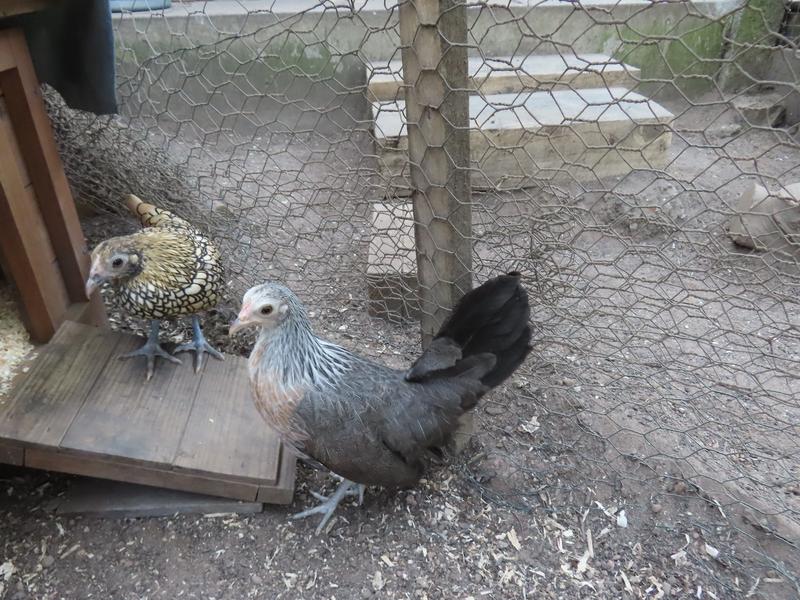

Sebrights come in gold, silver and citron colours and Ginger is a citron sebright. The sebright is a British breed of bantam. It is a true bantam with no large version. It’s one of the oldest recorded British bantam breeds.
They are non broody birds and can be difficult to breed. They lay tiny white eggs. They lay 60 – 80 eggs a year. They have unfeathered legs of slate blue and have a rose comb. They fly well.

Dutch bantams originate in the Netherlands. The Dutch bantam was first exported to the United States in the 1950’s. They are a true bantam, a naturally small bird with no related large fowl. They are among the smallest breeds of true bantams.
They are a good layer of small eggs. They can produce 160 cream or white eggs in a year.
They fly rather well. They will easily go broody and make good mothers. They have a comb with fine points and white earlobes. They have slate blue eggs. They come in many colours.

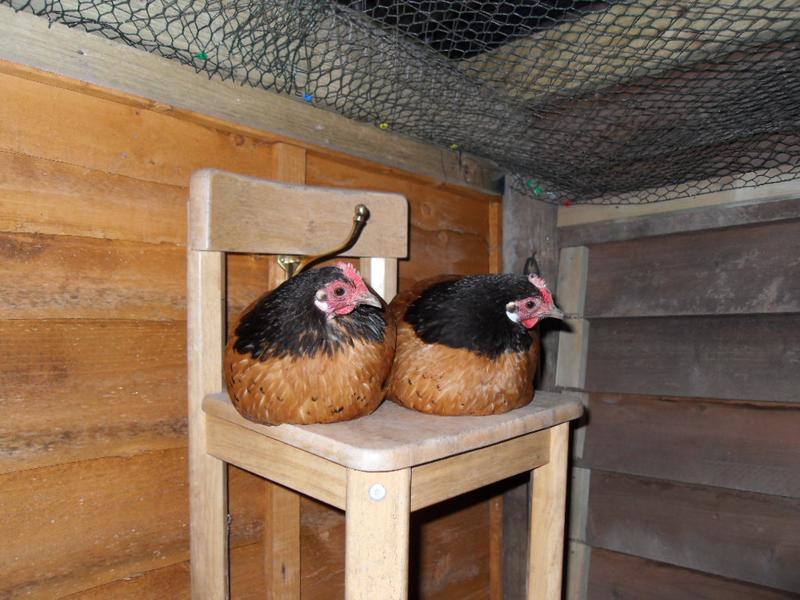
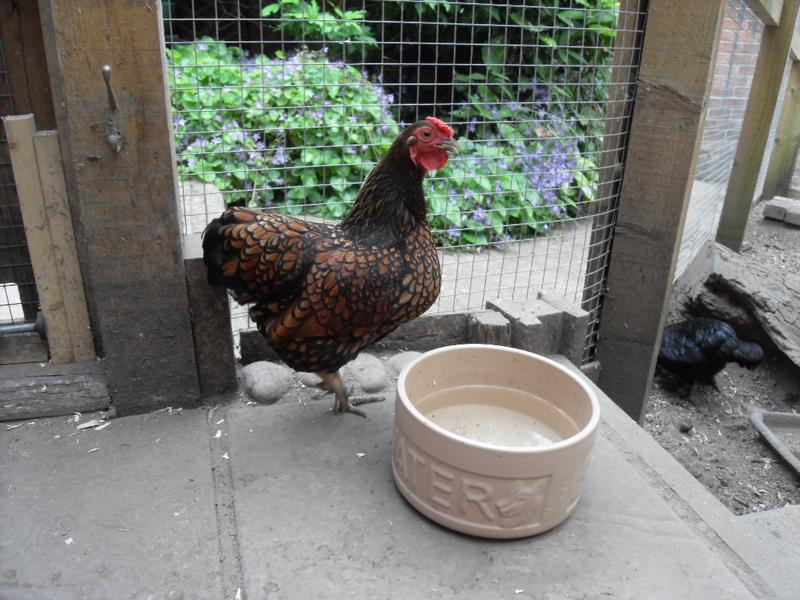
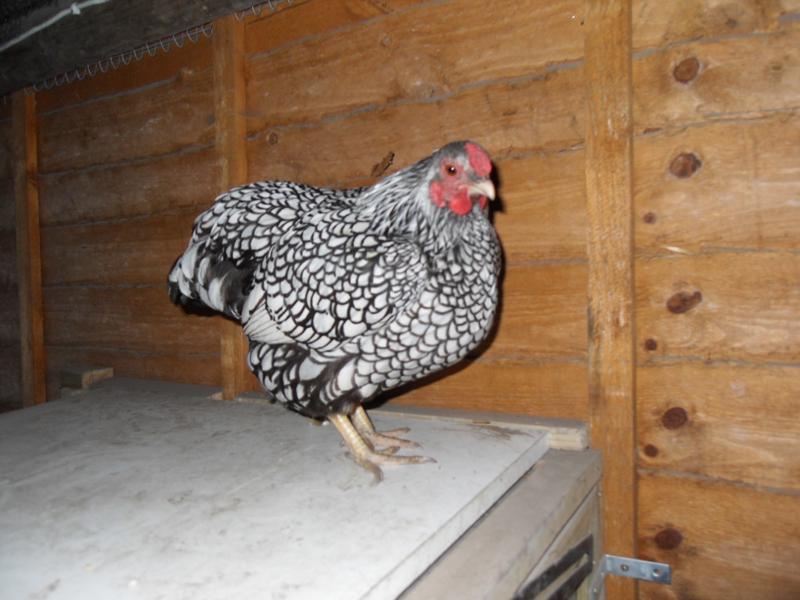
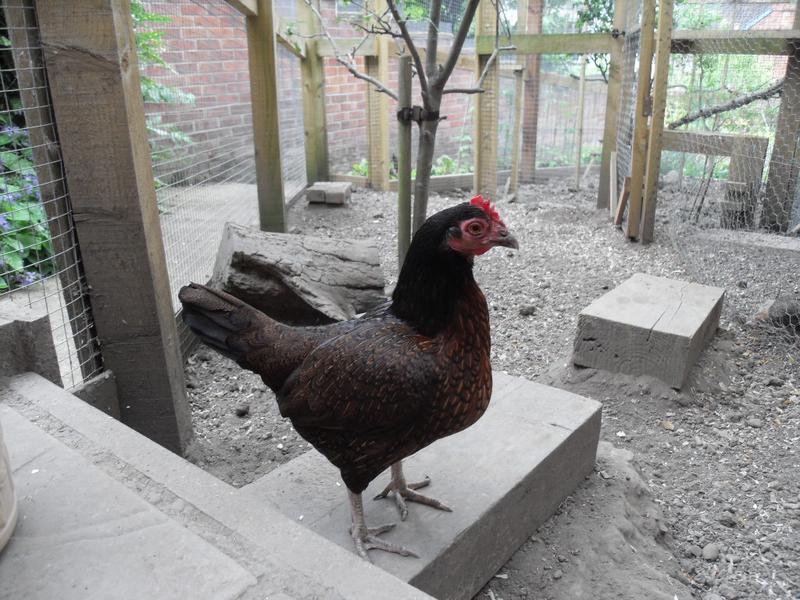
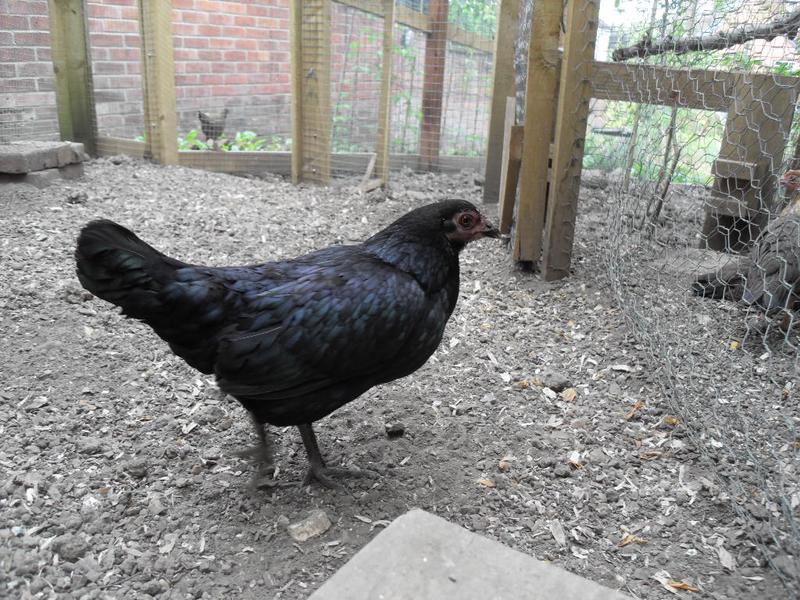
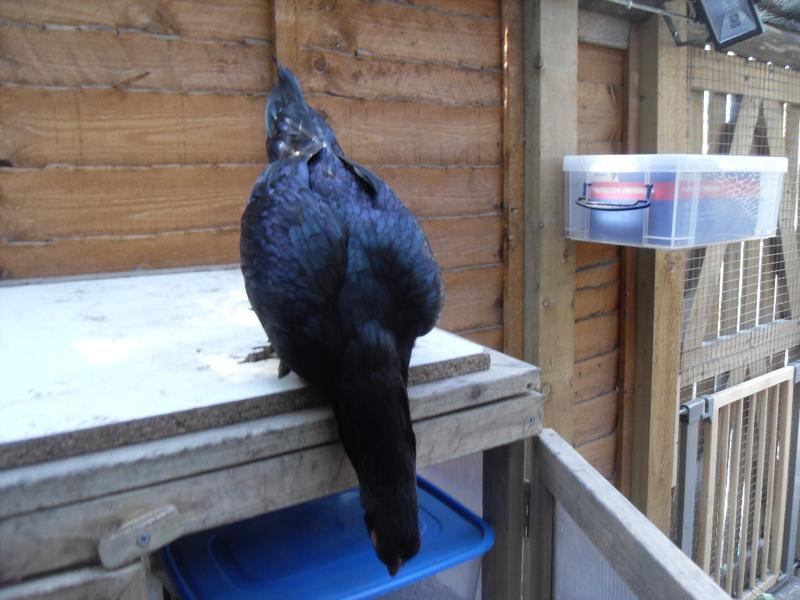
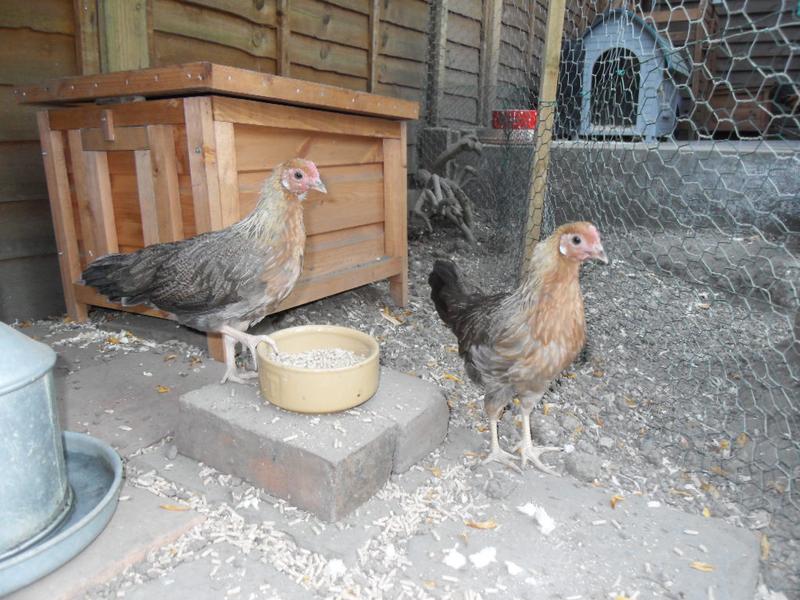
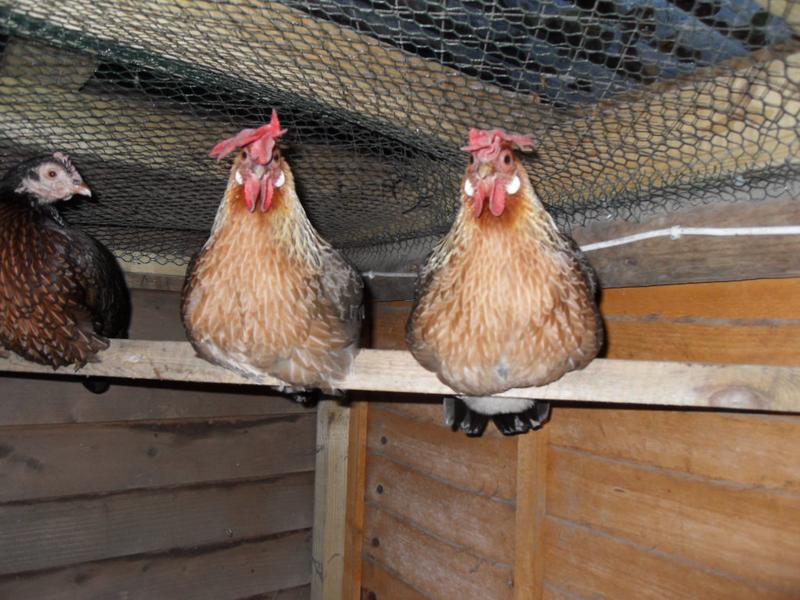
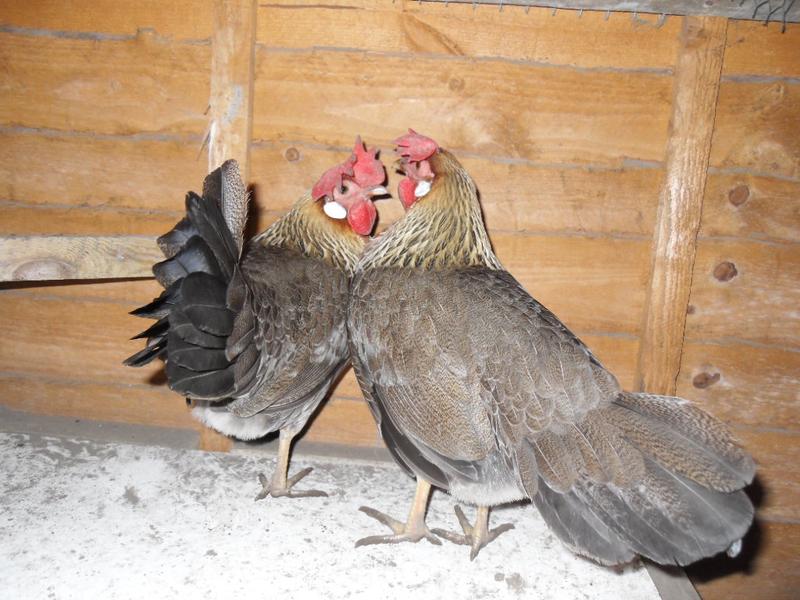
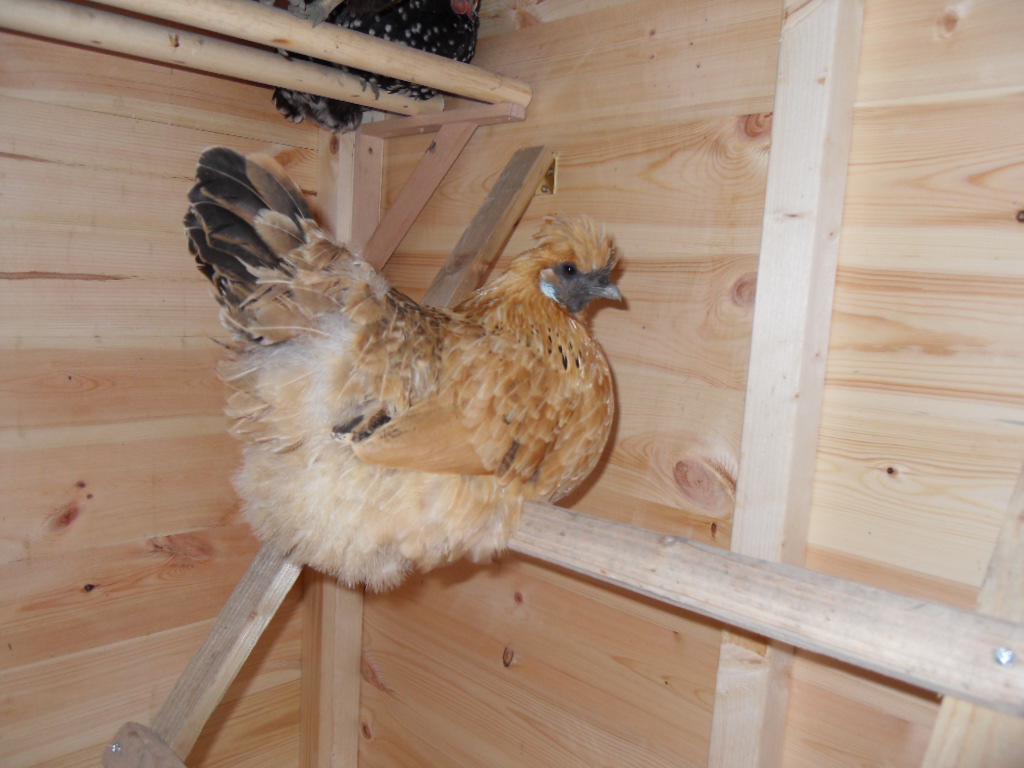
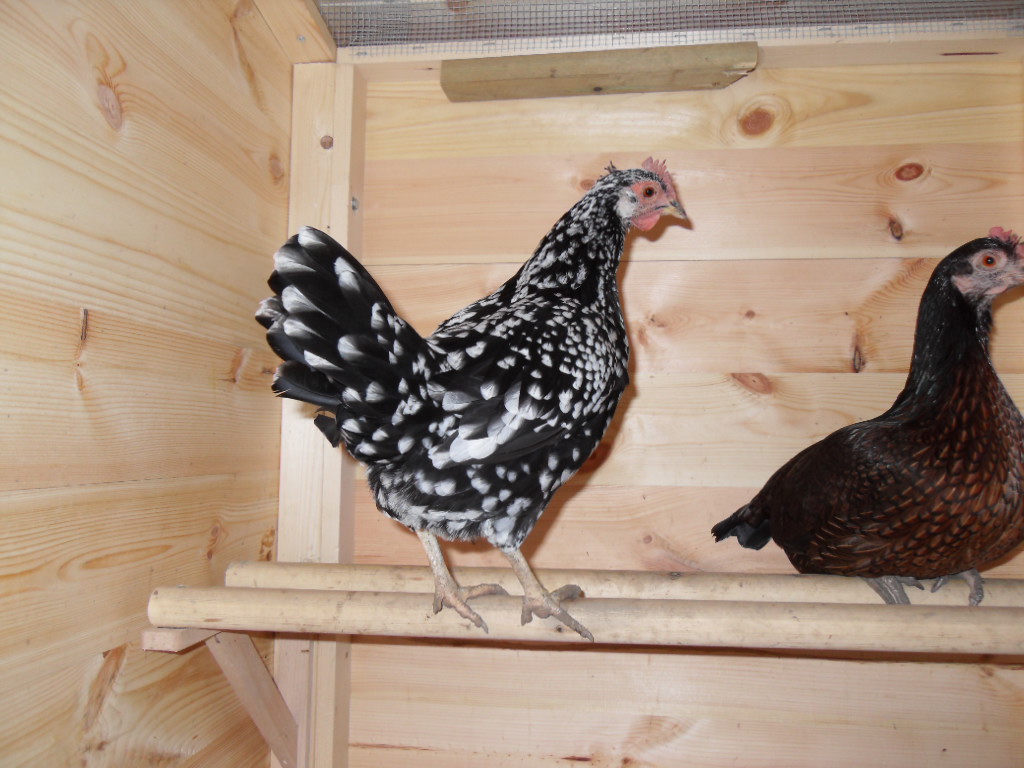
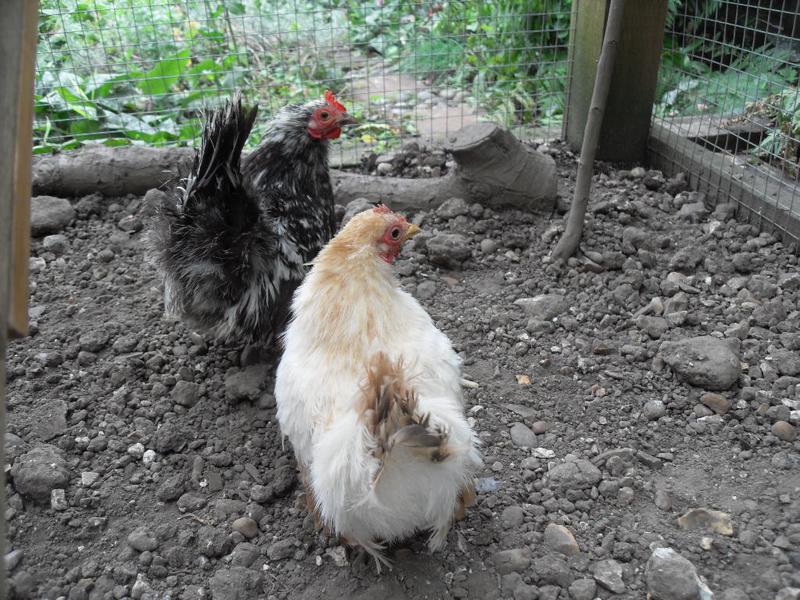
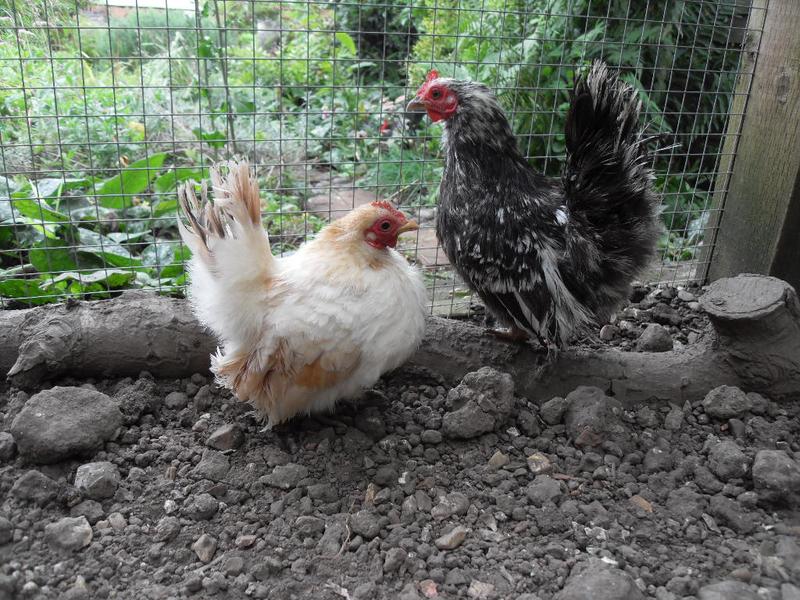
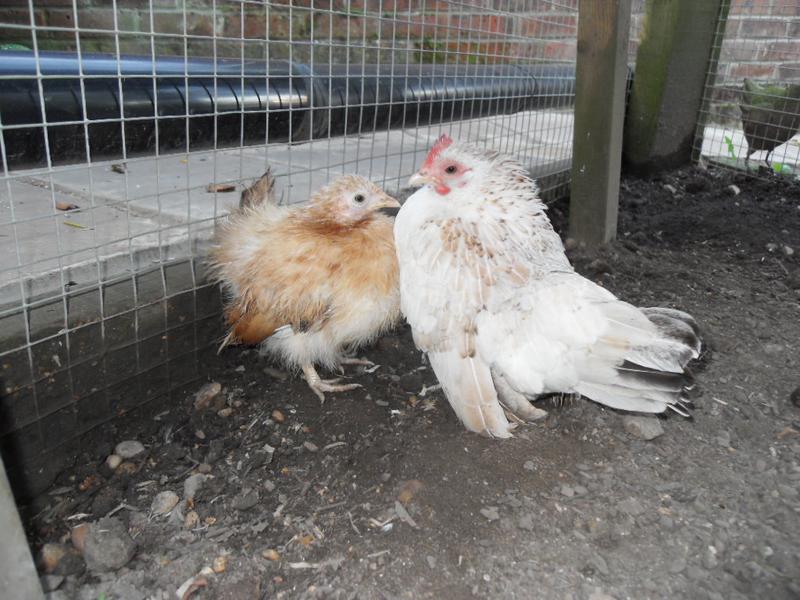
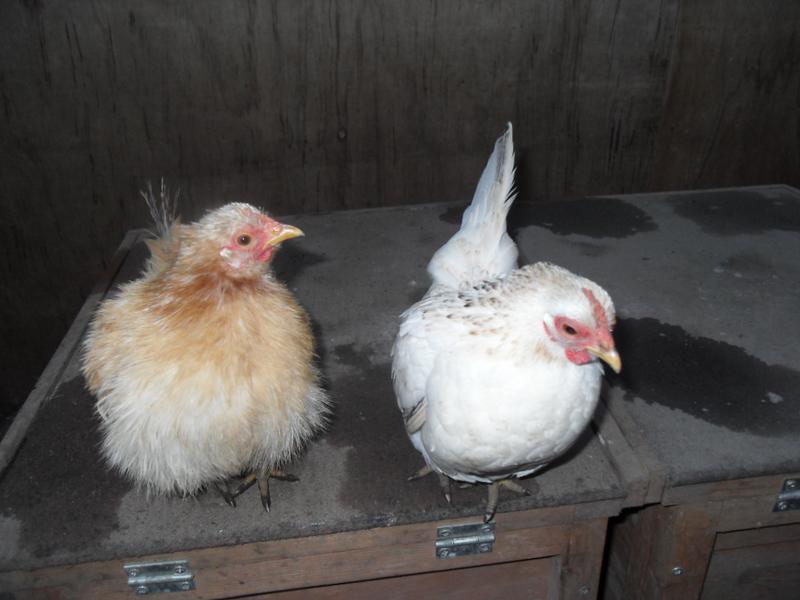



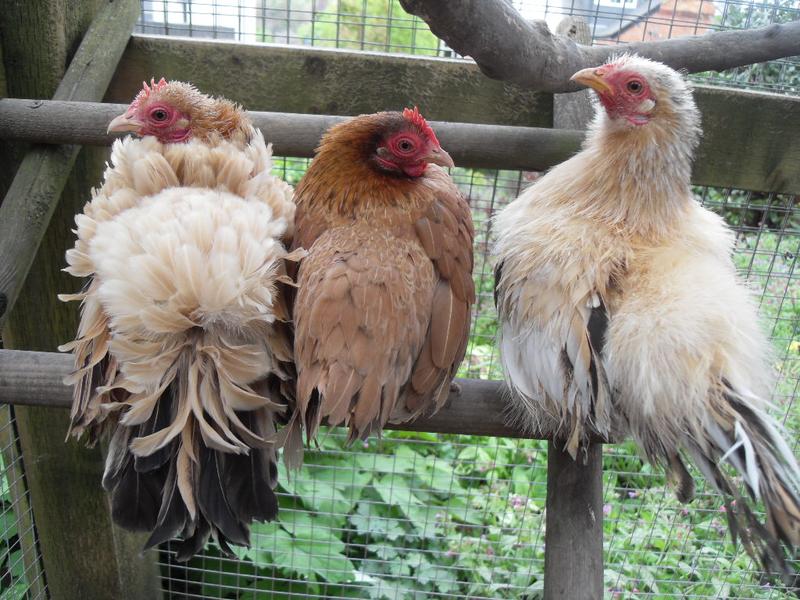
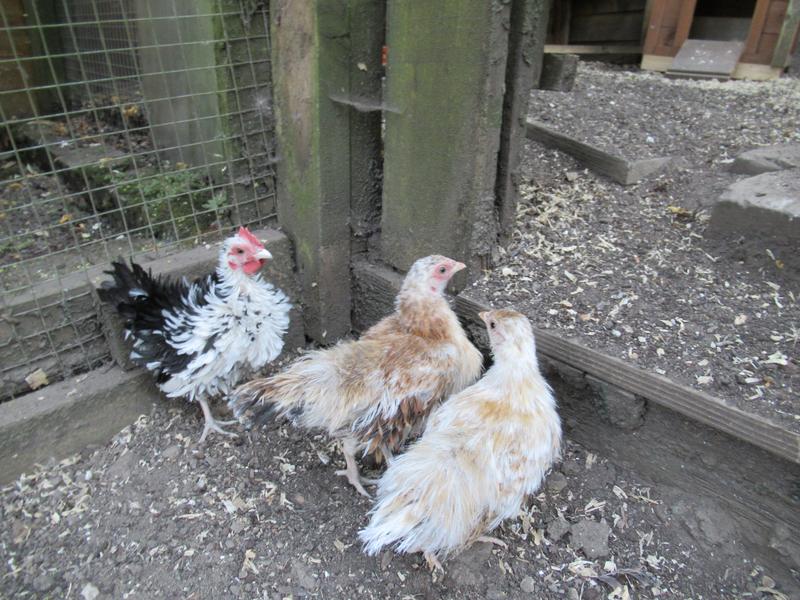


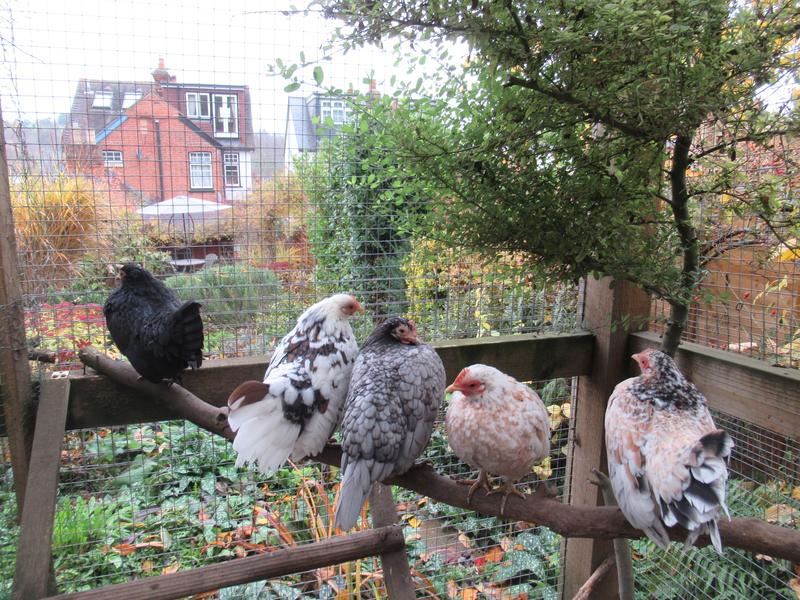
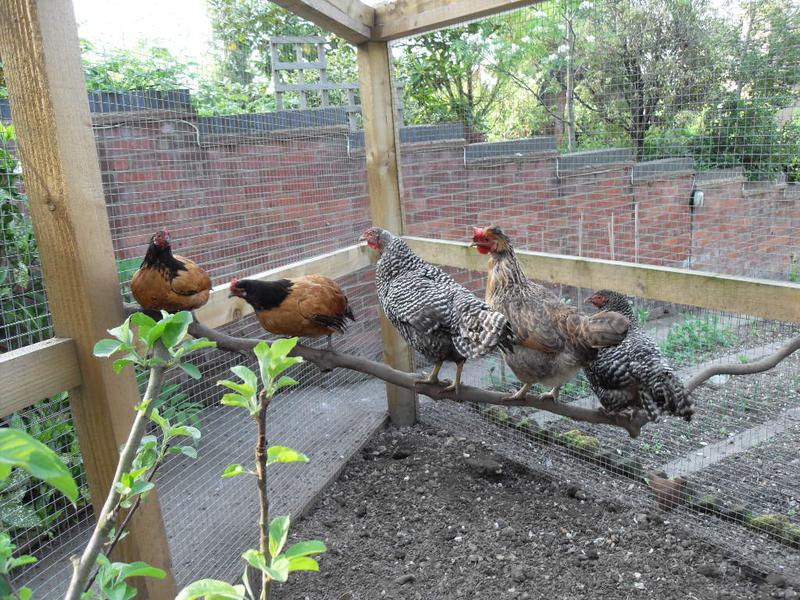 Click here to see the history of my flock.
Click here to see the history of my flock.
Thet are all lovely girls.